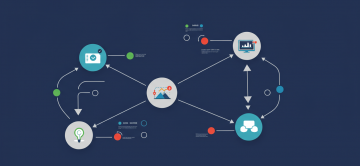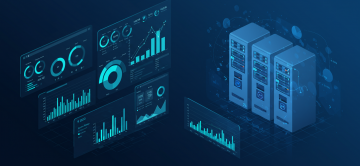The True Cost of Self-Managing Kafka vs. Expert Consulting

The True Cost of Self-Managing Kafka vs. Expert Consulting & Managed Services
Apache Kafka is the undisputed backbone of modern real-time data architectures. From powering event-driven microservices to feeding massive data lakes, its performance and scalability are legendary. Adopting Kafka seems like a straightforward decision for any data-forward company. But a critical question often gets glossed over in the initial excitement: what is the true total cost of ownership (TCO) when you decide to run it yourself?
Many organizations calculate the cost of servers and maybe an engineer's time, only to be caught off-guard by the immense operational burden that lies beneath the surface. At ActiveWizards, where we specialize in engineering complex data platforms, we've seen firsthand how underestimating Kafka's complexity can divert valuable resources from core business innovation. This article breaks down the hidden costs of self-managing Kafka and contrasts it with the strategic advantages of expert partnership.
The Iceberg of Kafka Costs: What Lies Beneath the Surface
The costs you anticipate—cloud instances, storage, network bandwidth—are just the tip of the iceberg. The real expenses are hidden in the massive, submerged part of the iceberg: the specialized human effort required to keep a mission-critical Kafka cluster not just running, but running optimally, securely, and reliably.
Diagram 1: The visible vs. hidden costs of a self-managed Kafka deployment.
Hidden Cost 1: The People and the Pager
A production Kafka cluster is not a "set it and forget it" system. It requires constant monitoring and, more importantly, expert intervention. When a broker fails at 2 AM, a partition leader election gets stuck, or Zookeeper (or its KRaft replacement) has a quorum issue, who is on call? You don't just need an engineer; you need an engineer with deep, battle-tested Kafka expertise. These specialists are expensive and in high demand. Their time spent on Kafka firefighting is time *not* spent building the features that differentiate your business.
Hidden Cost 2: The Black Art of Performance Tuning
Getting Kafka to run is easy. Getting it to handle your specific workload—whether it's ultra-low latency for financial transactions or extreme throughput for IoT data ingestion—is an art form. It involves a deep understanding of:
- JVM Tuning: Garbage collection pauses can bring a high-performance cluster to its knees.
- Broker Configuration: Hundreds of configuration parameters control everything from log flush policies to thread pools.
- Topic & Partition Strategy: The number of partitions impacts parallelism but also overhead. Getting it wrong can lead to hotspots or excessive resource consumption.
- Producer/Consumer Optimization: Fine-tuning batch sizes, buffer memory, and acknowledgment settings is critical for achieving performance goals.
A common mistake we see is over-partitioning a topic in anticipation of future scale. While well-intentioned, this can cause significant issues. Each partition is a unit of parallelism but also consumes resources (file handles, memory) on every broker and adds to leader election overhead. A cluster with tens of thousands of partitions can become slow and unstable. The right strategy involves starting with a calculated number of partitions and having a clear plan for scaling, such as using a keying strategy that allows for future expansion without a full data re-shuffle. This is a nuanced architectural decision, not just a configuration setting.
Hidden Cost 3: Security, Compliance, and Disaster Recovery
In any enterprise context, data security is non-negotiable. For a self-managed cluster, your team is responsible for implementing and maintaining:
- Encryption: Setting up TLS for data in transit and managing keys for data at rest.
- Authentication & Authorization: Configuring SASL and ACLs to ensure producers and consumers can only access the topics they're permitted to.
- Audit Logs: Establishing a clear trail of who did what and when for compliance audits.
Furthermore, what is your disaster recovery (DR) plan? Setting up a cross-datacenter replication solution like MirrorMaker 2 is notoriously complex, with subtle failure modes that can lead to data loss or duplication if not managed by experts.
A Strategic Comparison: Self-Management vs. Expert Partnership
When you frame the decision in terms of these hidden costs, the value of an expert partnership becomes clear. It's a shift from a tactical cost center to a strategic enabler.
| Factor | Self-Management Approach (The Hard Way) | Expert Partnership (The Smart Way) |
|---|---|---|
| Expertise & Staffing | Hire, train, and retain a team of expensive, specialized data engineers. High opportunity cost. | Leverage ActiveWizards' on-demand expertise. Your team focuses on core product development. |
| 24/7 Operations | Establish and manage a stressful, high-stakes on-call rotation for your internal team. | Rely on a managed service with a 24/7 SLA. Your team sleeps through the night. |
| Performance | A constant, reactive cycle of tuning and firefighting as performance issues arise. | Proactive optimization and architectural design based on deep experience with diverse workloads. |
| Security & DR | Your team bears the full responsibility and risk of implementing and validating complex security and DR plans. | Benefit from battle-hardened, pre-built security architectures and proven disaster recovery playbooks. |
| Cost Model | Unpredictable. Spikes with incidents, staff turnover, and urgent consulting needs. | Predictable, transparent costs (for consulting or managed services). Smoother financial planning. |
Are You Ready to Self-Manage Kafka? A Checklist
Before committing your team to the path of self-management, ask yourself these critical questions:
- Do you have at least two engineers with deep, demonstrated expertise in Kafka and Zookeeper/KRaft internals?
- Are you prepared to fund a 24/7/365 on-call rotation for this platform?
- Do you have a documented and regularly tested disaster recovery plan for a full cluster or region failure?
- Does your team have the bandwidth to manage the entire ecosystem (Connect, Schema Registry, etc.) in addition to the core brokers?
- Is managing data infrastructure a core competency that provides your company a competitive advantage?
If you answered "no" or "I'm not sure" to any of these, engaging with an expert partner is likely the more cost-effective and strategic choice.
The ActiveWizards Solution: From Expert Guidance to Full Management
Recognizing that every organization's needs are different, we offer a spectrum of services designed to de-risk your Kafka journey and maximize its value.
- Kafka Consulting & Architectural Review: If you have a team in place but need to ensure you're on the right path, we provide expert guidance. We can help you design a scalable architecture, audit your existing setup for performance and security, and train your team on best practices.
- Managed Kafka Services: For organizations that want to focus entirely on their business, we offer a fully managed solution. We handle the architecture, deployment, monitoring, upgrades, and 24/7 operations, delivering Kafka as a reliable, secure, and performant utility.
Engineer Intelligence for Your Data Platform
Don't let the operational complexity of Kafka drain your resources and slow down innovation. Partner with ActiveWizards to build or manage a data platform that is a strategic asset, not an operational burden. Let us handle the complexity so you can focus on building your business.



Comments (0)
Add a new comment: